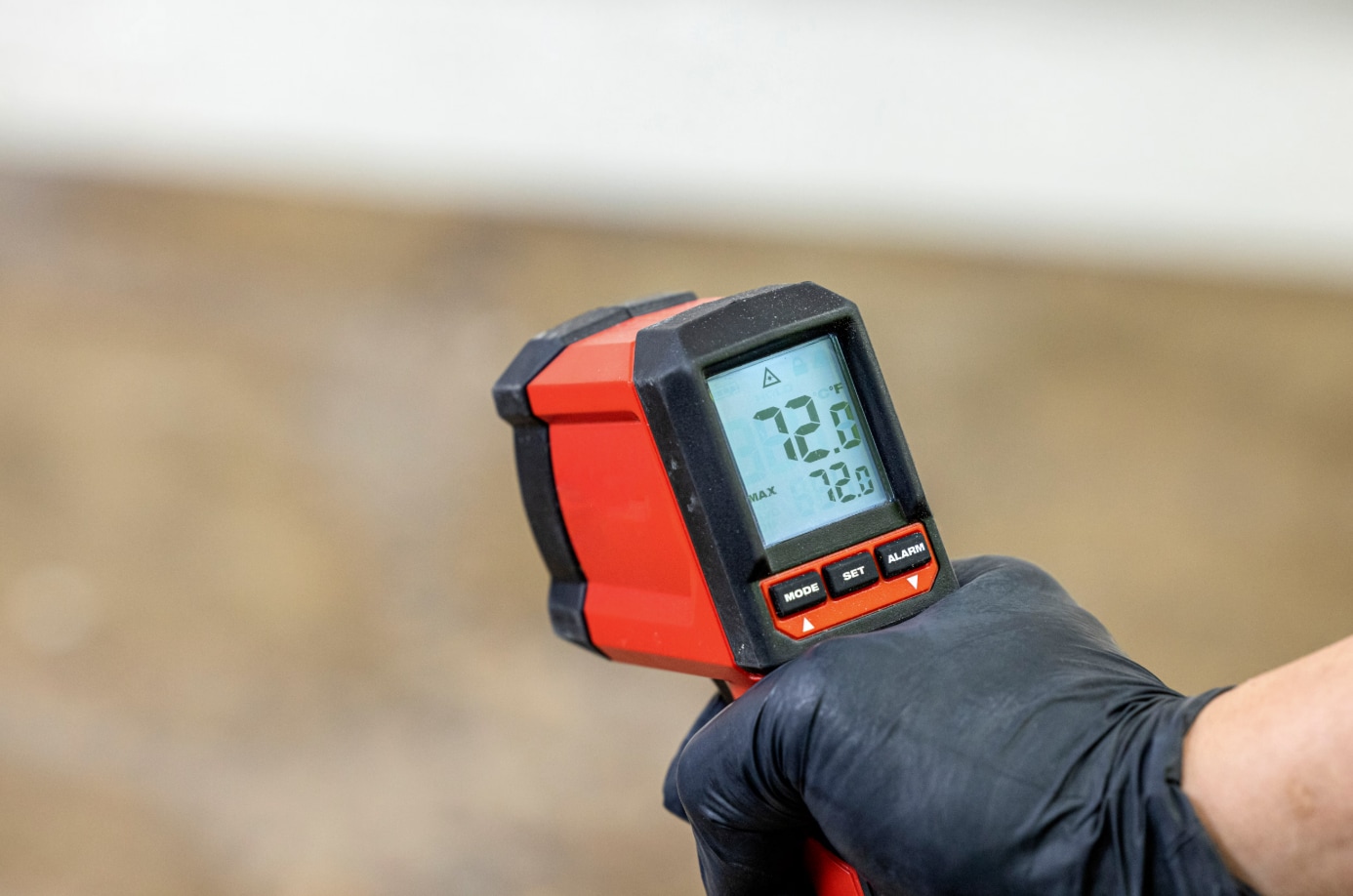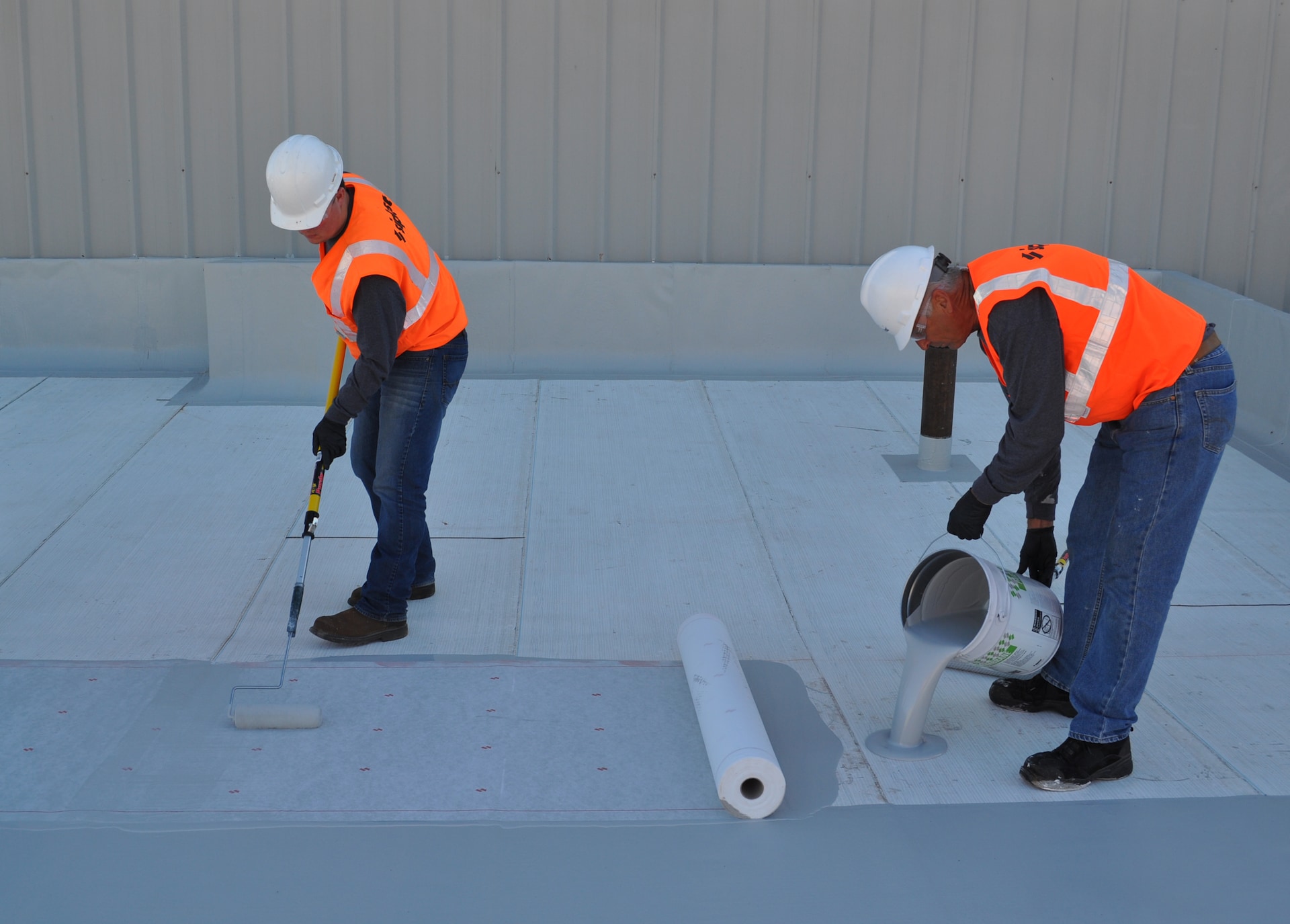Siplast began manufacturing PMMA resins in Arkadelphia, Arkansas in 2006. At the time, PMMA was part of a growing trend towards high-performance liquid-applied membranes. With an already established performance history in Europe, Parapro Roof Membrane Systems quickly became recognized as the leader and trailblazer in the rapidly gaining liquids market.
Unlike some of the other liquid-applied system manufacturers, Siplast had the unique opportunity to combine the durability of modified bitumen with the benefits of liquid-applied membranes. Siplast brought an innovation to the modified bitumen/liquid-applied membrane combination by developing a modified bitumen sheet specifically for use with Parapro Roof Membrane.
Pro Base series membranes have a factory-applied, specially formulated acrylic dispersion on the top surface of the modified bitumen sheet. The acrylic surfacing in combination with the membrane serves several very important purposes that optimize the application and performance of PMMA systems.
Substrate Adhesion
The adhesion of PMMA and other liquid-applied membranes to a substrate is very dependent on the surface preparation of that substrate. To achieve proper adhesion to concrete, for instance, shot blasting is the method preferred by most liquid-applied manufacturers for direct application. When directly adhering to a new or old concrete substrate, moisture and other contaminants in the concrete deck can be troublesome. Along with surface preparation, some substrates may even require expensive primers to act as a moisture mitigation layer.
Pro Base TS is designed to vent vapor pressure in situations where blistering is a possibility. Rather than force moisture to remain in the concrete like primers and liquid systems, TS allows the natural movement of moisture to occur and safely move out of the system.
Pro Base Surface Adhesion
Base ply membranes that do not have the acrylic dispersion surfacing can have limited adhesion values when being overlaid with a liquid-applied membrane. Materials that cure rapidly, such as PMMA, do not afford lengthy open times that reduce the ability to solvate the bitumen and embed the sand as a solvent-borne adhesive would for example. Instead, the adhesion is primarily to the sand only. As the size of the sand increases, this effect is amplified and even lower peel strength can be seen.
Peel results show a significant improvement in the adhesion strength of Parapro to the Pro Base surfacing when compared to various base plies. In fact, the peel strength of PMMA to Pro Base is 2–3 times that of base ply membranes that do not have the acrylic dispersion surfacing can have limited adhesion values when being overlaid with a liquid-applied membrane.

Surface Temperature
When applying PMMA, a seasoned contractor knows that they must constantly monitor temperatures, adjust catalyst percent, and even stop the application if temperatures fall outside the application windows. One of the greatest concerns is the substrate temperature. Ambient and product temperatures will move slowly and predictably over the course of the day. Solar loading however, can rapidly change the surface temperature of a roof membrane, especially for a sand-surfaced base ply.
Based on our testing, the resin temperature quickly increases toward the substrate temperature once it is applied. PMMA is designed to work and cure within certain temperature parameters; thus the need for winter and summer grade materials. The substrate temperature is no different and must be monitored often to catch increases.

Pro Base is designed to have a reflective surface that minimizes thermal swings of the substrate. The more reflective the substrate the less energy is absorbed, which in turn keeps the substrate temperature down. There are many time temperature studies related to membrane reflectance and temperature that support this use of a reflective base ply. Reference Figures 3 and 4 in the Parapro Roof Membrane System: Improving Adhesion Strength White Paper to see the temperature difference between a white and black membrane under the same conditions. The black membrane has exceeded the maximum substrate temperature of 50°C by 9:00 AM and remains above the limit for 10 hours.
The white membrane doesn't reach the maximum temperature until noon. Siplast's innovative acrylic-surfaced base ply used in combination with a durable PMMA liquid-applied membrane allows more efficient application and helps create conditions conducive to quality application.


